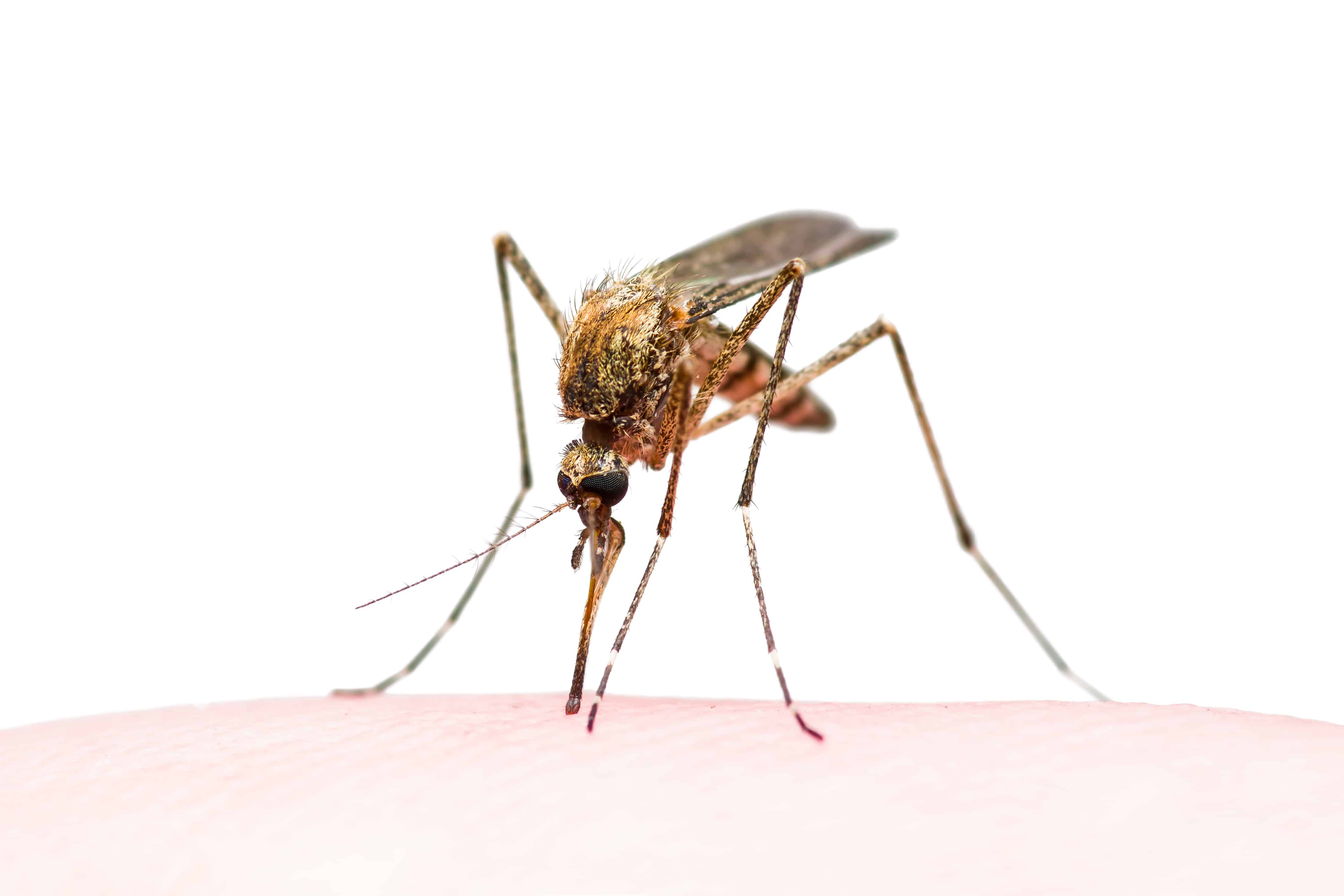September 28, 2020

COVID-19
COVID-19 in malaria-endemic region. Researchers conducting a modelling study on the effects of Covid-19 related disruptions on malaria mitigation strategies across malaria-endemic African countries projected that simultaneous reductions in insecticide-treated net coverage and effective treatment rates by 25% and 50%, could lead to an increase in malaria burden from the estimated baselines levels of 215.2 (95% CI 143.7 to 311.6) million cases and 386.4 (95% CI 307.8 to 497.8) thousand deaths, to 240.5 (156.5 to 358·2) million cases and 520.9 (404.1 to 691.9) thousand deaths, and to 251.0 (162.2 to 377.0) million cases and 640.2 (492.0 to 856.7) thousand deaths, respectively. These projections led the authors to suggest that malaria mitigating strategies must remain integrated priorities next to the response to COVID-19, in order to avert additional public health disasters. [The Lancet Infectious Diseases]
Change in Antibodies to SARS-CoV-2 Over 60 Days Among Health Care Personnel in Nashville, Tennessee. Researchers from the CDC and Vanderbilt University Medical Center conducted a public health surveillance study evaluating anti–SARS-CoV-2 antibodies at baseline and approximately 60 days later for 600 health care personnel who regularly had direct contact with adult patients with COVID-19. While anti–SARS-CoV-2 antibodies were detected in 19 (7.6%), healthcare workers, only 8 (42%), had antibodies that persisted above the seropositivity threshold at 60 days with the other 11 (58%), becoming seronegative. Despite limitations in sample size and participant selection, these findings imply that cross-sectional seroprevalence studies evaluating population immunity may underestimate rates of prior infections, since anti–SARS-CoV-2 antibodies may only be transiently detectable following infection. [JAMA]
Decreased Influenza Activity During the COVID-19 Pandemic — United States, Australia, Chile, and South Africa, 2020. Researchers evaluating data from U.S. clinical laboratories that participate in virologic surveillance systems for influenza, as well as from WHO’s FluNet platform with data from three robust sentinel sites for influenza in the Southern Hemisphere (Australia, Chile, and South Africa), revealed very low influenza activity during the period from June to August 2020. In the US alone, the percentage of U.S. respiratory specimens submitted for influenza testing that tested positive decreased from >20% in November 2019 to 2.3% (by the end of March 2020), and has remained at historically low interseasonal levels (0.2% versus 1–2%). These observations imply that interventions aimed against SARS-CoV-2 transmission, plus influenza vaccination, could substantially reduce influenza incidence and impact in the 2020–21 Northern Hemisphere season. [CDC].
Location Matters: Geographic Disparities and Impact of COVID-19. Experts in the US reviewing the impact of the COVID-19 pandemic on the geographic disparate populations in the United States list access to testing, lack of effective means of communication, lack of testing of asymptomatic children and youth, and disparities in healthcare facilities and intensive care units as barriers to adequate diagnosis and treatment of COVID-19 cases. Experts suggest that health policymakers and government authorities need to develop emergency and preparedness plans that address these shortages and limitations, in order to limit transmission and prevent these geographically distant and isolated areas from becoming fertile grounds for resurgence of the pandemic. [The Journal of Infectious Diseases]
Drug Resistance and Global Health
Utility of broad-spectrum antibiotics for diagnosing pulmonary tuberculosis in adults. A systematic review and meta-analysis investigating the sensitivity and specificity of the trial of antibiotics versus mycobacteriology tests in adults (≥15 years) with tuberculosis symptoms revealed that their pooled sensitivity (67%, 95% CI 42–85) and specificity (73%, 58–85) was below internationally defined minimum performance profiles for tuberculosis diagnostics. In the event of negative sputum-based tuberculosis diagnostic tests, clinical response to broad-spectrum antimicrobial agents, aimed at ruling out any bacterial respiratory tract infections, has long been the priority for national programmes in resource-limited settings; however, the authors suggest that given the poor diagnostic performance, and potential to increase antimicrobial resistance, well designed prospective trials are necessary to properly assess its utility. [The Lancet Infectious Diseases]
Community-level consumption of antibiotics according to the AWaRe (Access, Watch, Reserve) classification in rural Vietnam. Researchers conducted a cross-sectional study on data from antibiotic purchases collected through a customer exit survey of 20 community antibiotic suppliers in Ba Vi District, Hanoi, between September 2017 and July 2018 and observed a high consumption of watch-group antibiotics such as second and third-generation cephalosporins and macrolides. Among 1342 antibiotic encounters, 59.0% consisted of access-group antibiotics and 39.3% consisted of watch-group antibiotics. Furthermore, purchases without prescription took place in 57.6% of the encounters, with purchases overall being attributed to manifestation of symptoms such as cough, sore throat, fever and runny nose. Despite the fact that access-group antibiotics were the most commonly used antibiotics in community pharmacies, the consumption level of watch-group antibiotics was remarkably high, especially among children (55%), warranting for urgent pharmacy-targeted AMS interventions. [JAC-Antimicrobial Resistance]
Antimicrobial resistance among children in Africa: need for paediatric clinical trials. Experts evaluating the number of interventional clinical trials involving antimicrobial agents registered on clinicaltrials.gov over a ten-year period (January 2010-Dec 2019), in children up to 17 years of age, found that only 0.8% (1,121/141,118) of interventional clinical trials involving antimicrobial agents had pediatric involvement, with less than 10% (111/1,121) of them being conducted in Africa. Of these, 46 were classified as pediatric antibacterial trials and although this number represents an increase in the last decade, it comprises only 0.8% of all interventional antimicrobial trials registered. Furthermore, the majority were led by non-African institutions, leading the authors to suggest that capacity-building initiatives would be a better a long-term investment for the future of pediatric research, and that African-led clinician scientists are best placed to ask relevant research questions in their local setting. [Rev Anti Infect Ther]
Healthcare-associated bacterial infections in the paediatric ICU. Researchers in the UK carried out a retrospective review of children admitted to the paediatric ICU (PICU) at a tertiary referral center over a 3 year period between November 2014 and October 2017, and revealed a low incidence (1.34%) of healthcare-associated bacterial infections (HCAI), with the highest numbers of HCAIs being attributed to pneumonia (58%), and urinary tract infections (31%). Some of the main observations, with implications for the emergence of antibiotic resistance, were that two thirds of the patients with HCAI had one or more comorbidity, implying frequent hospital visits and repeated antibiotic therapies. The majority (61.5%) of HCAIs were caused by Gram-negative organisms and the median length of hospital stay for patients increased to 8 days as compared to 3 days, warranting for a tailored approach to antimicrobial therapy in the PICU. [JAC-Antimicrobial Resistance]
Antimicrobial stewardship in patients with acute bacterial skin and skin-structure infections: An international Delphi consensus. Responses from a survey sent to an expert panel of infectious disease specialists and microbiologists across several European countries, evaluating clinical practices related to management of acute bacterial skin and skin-structure infections (ABSSSI), revealed a consensus among experts on strategies aimed at reducing emergence of resistant strains. Actions such as reduction in length of hospital stay, use of narrow-spectrum antibiotic regimens, and exploration of new therapeutic options in improving patient compliance were agreed upon, among others. While there was a consensus on following the main principles of antimicrobial stewardship (AMS,) experts recognised that the lack of dedicated AMS teams, of commitment by the hospital administration, as well as the limited economic resources, comprised some of the key barriers to AMS implementation. [Journal of Global Antimicrobial Resistance]
Photo credit: Shutterstock













